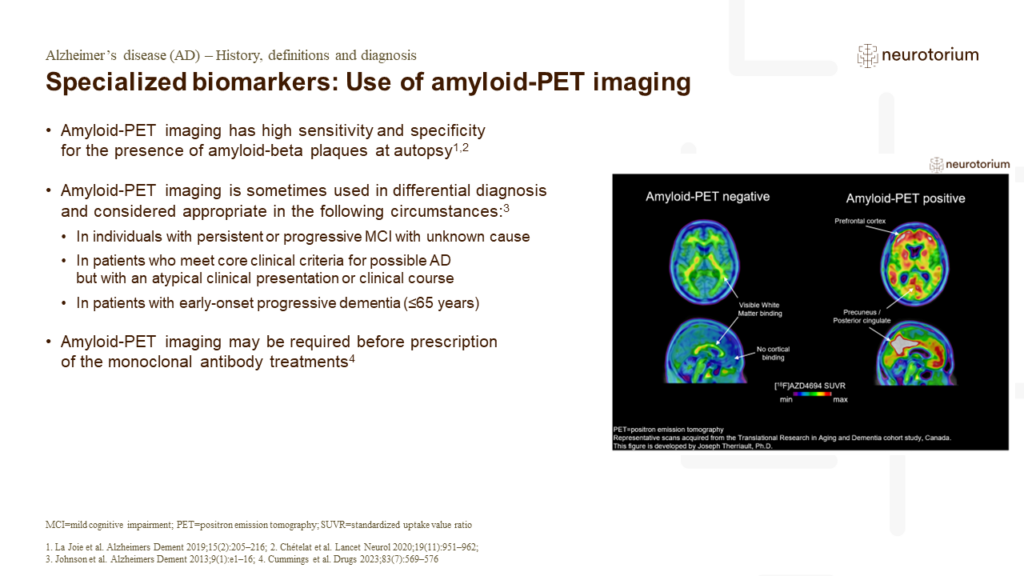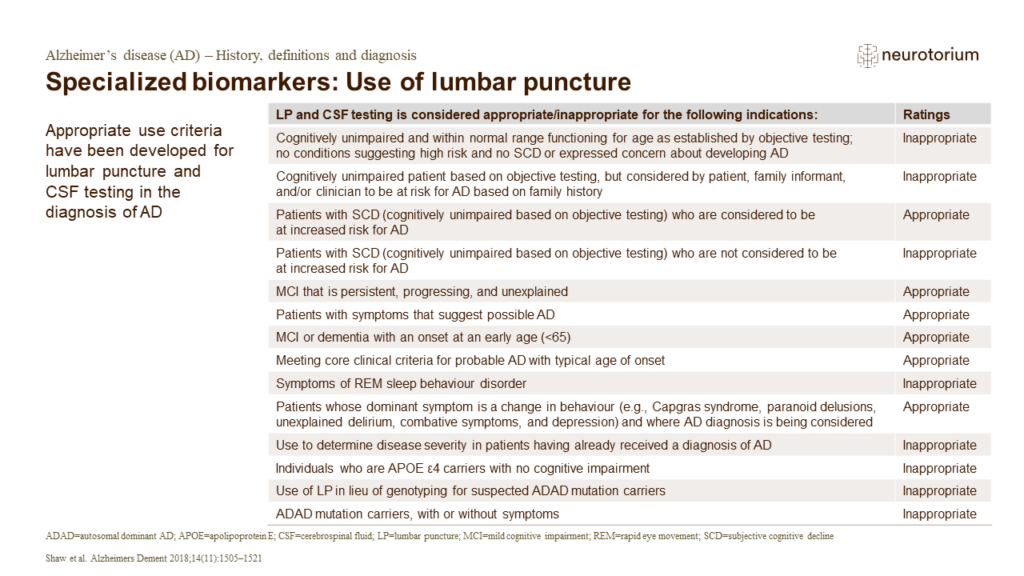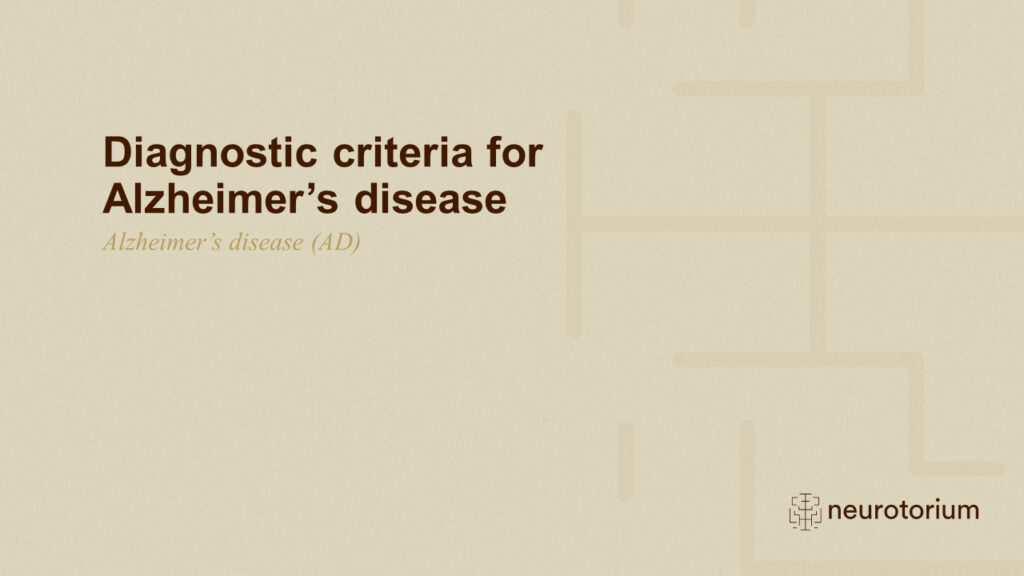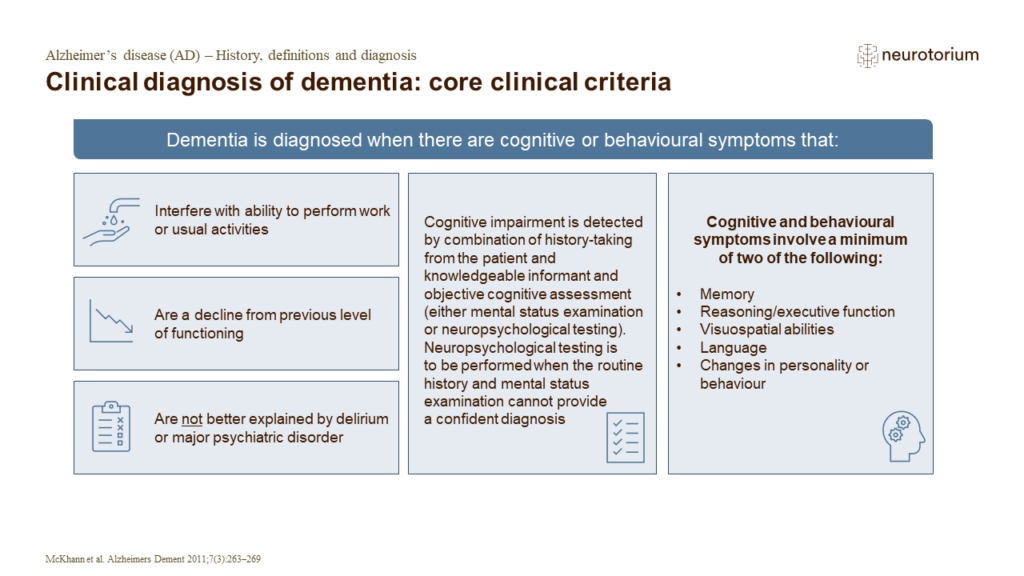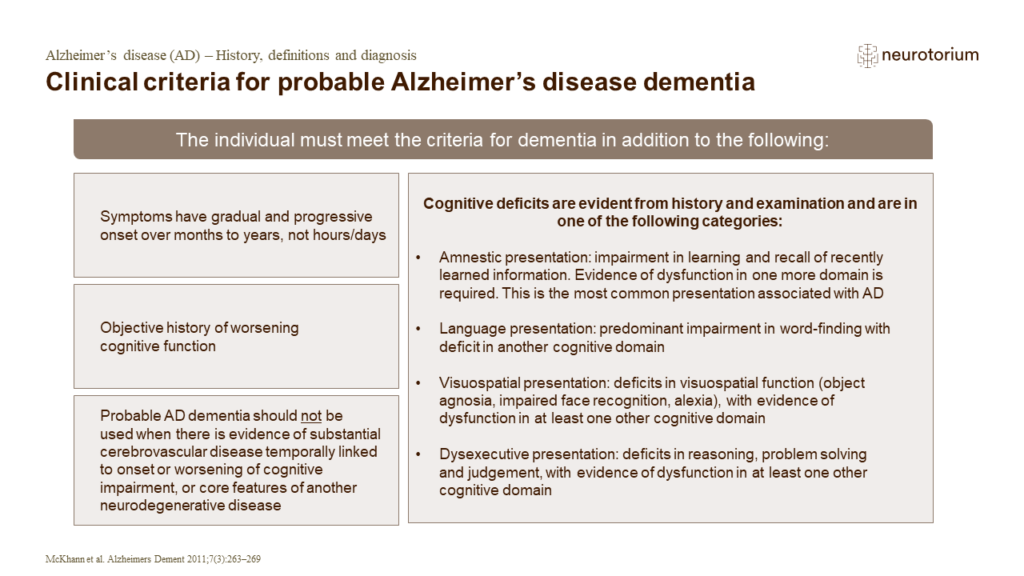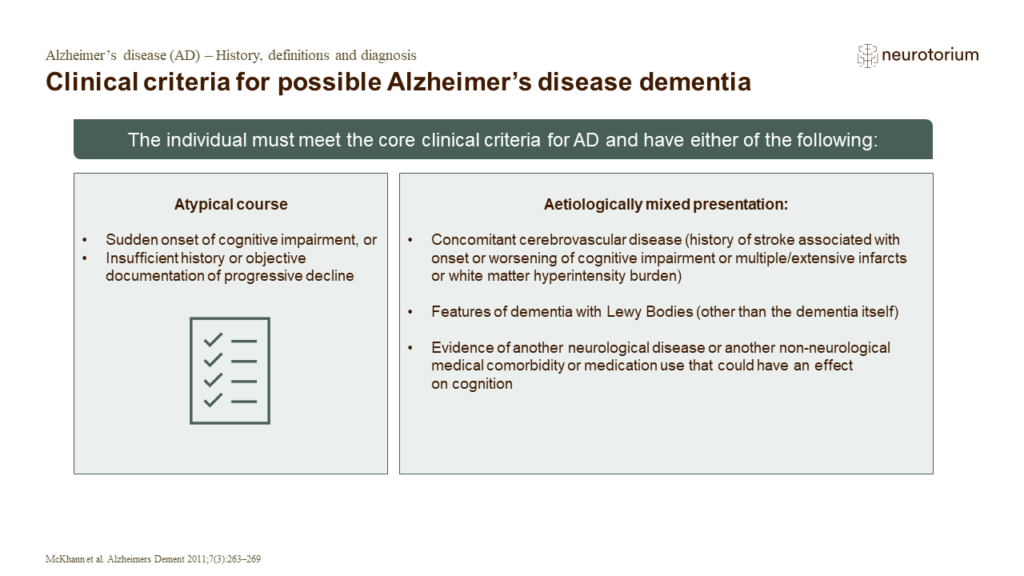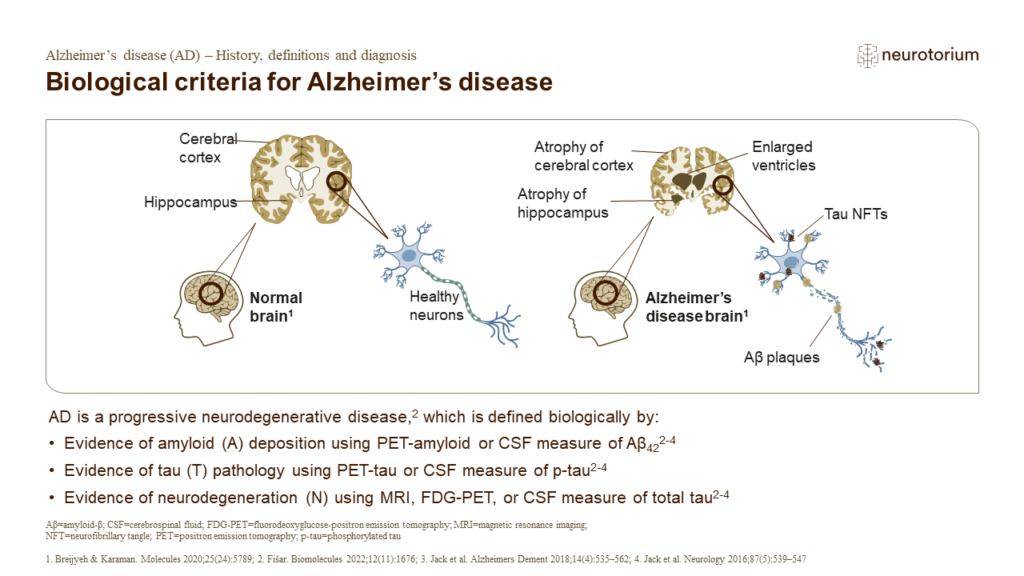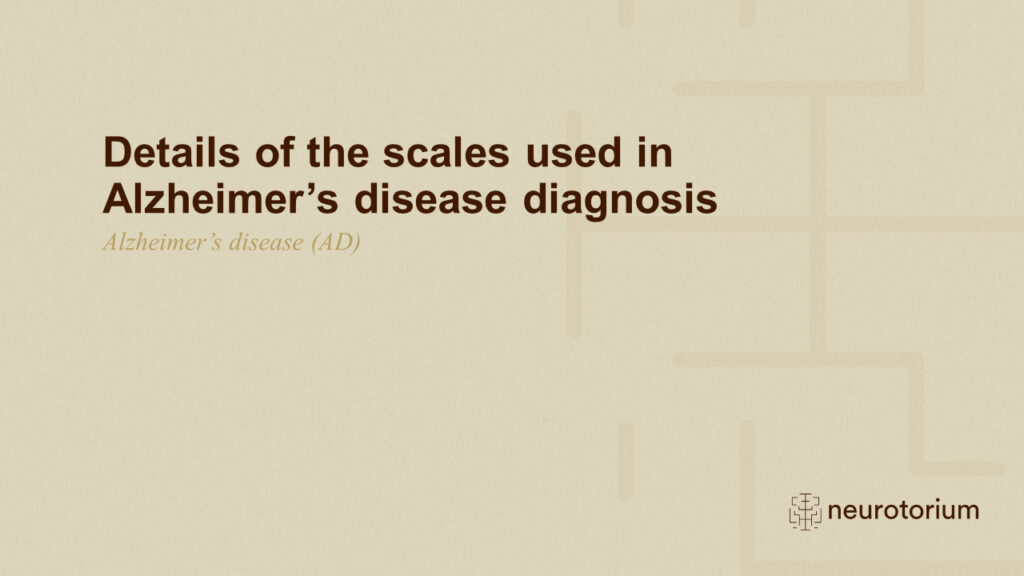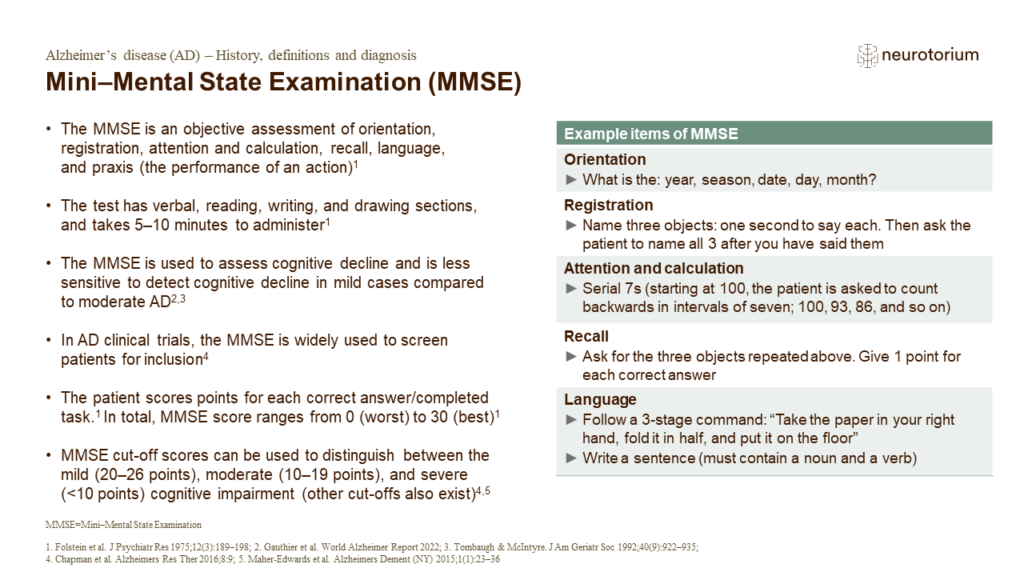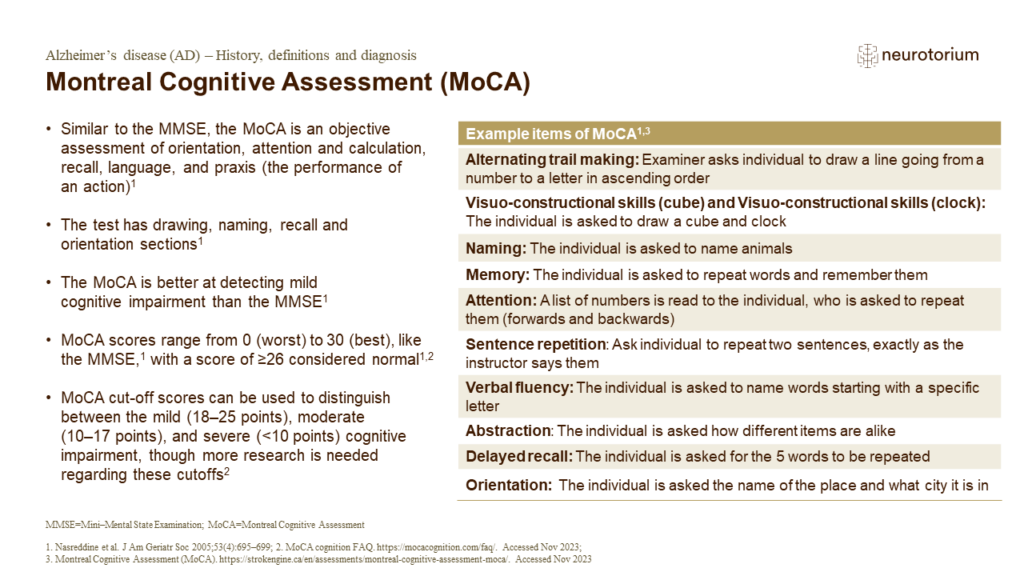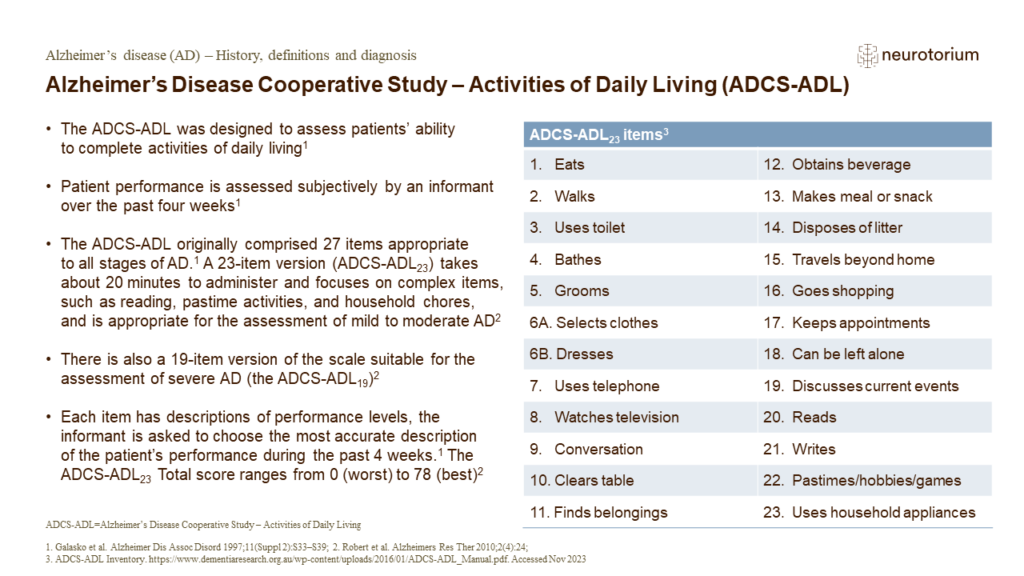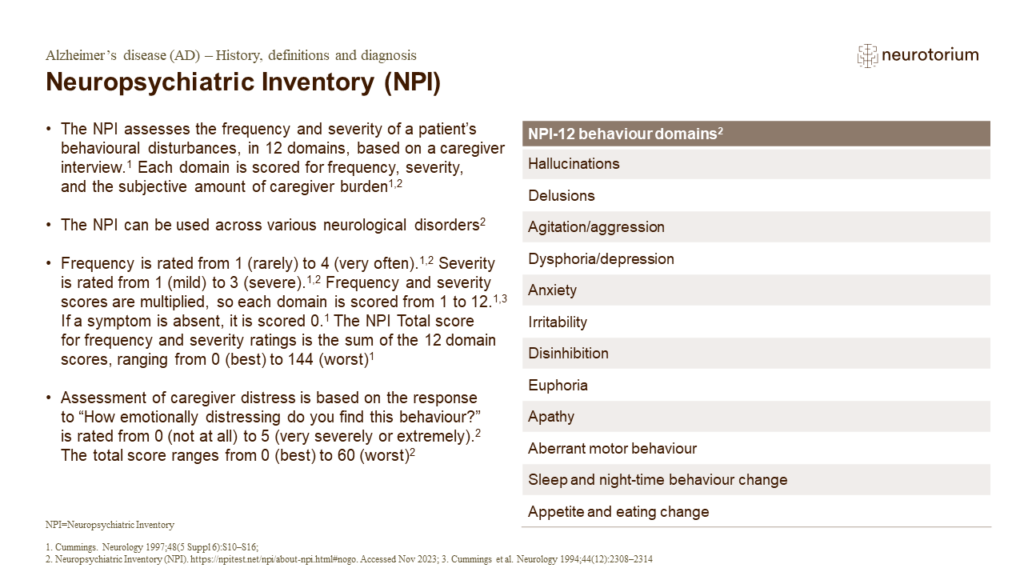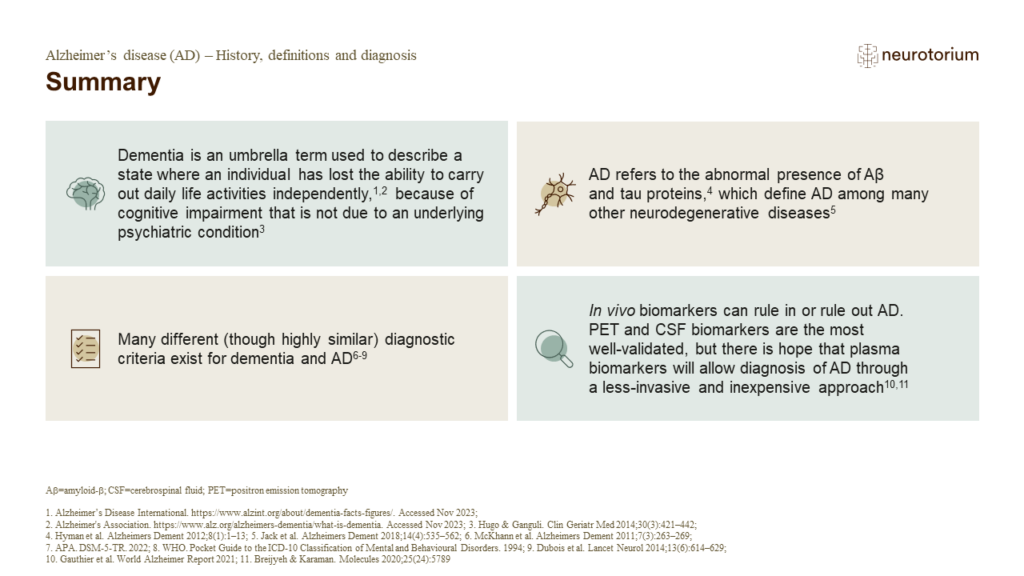Index for
slide deck
Introduction
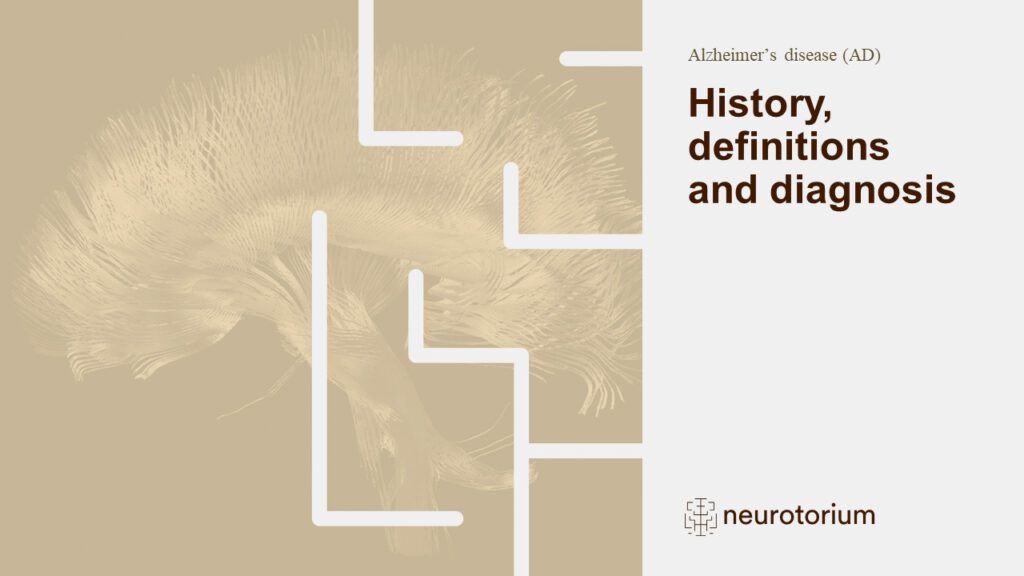
History, definitions and diagnosis
History and definitions
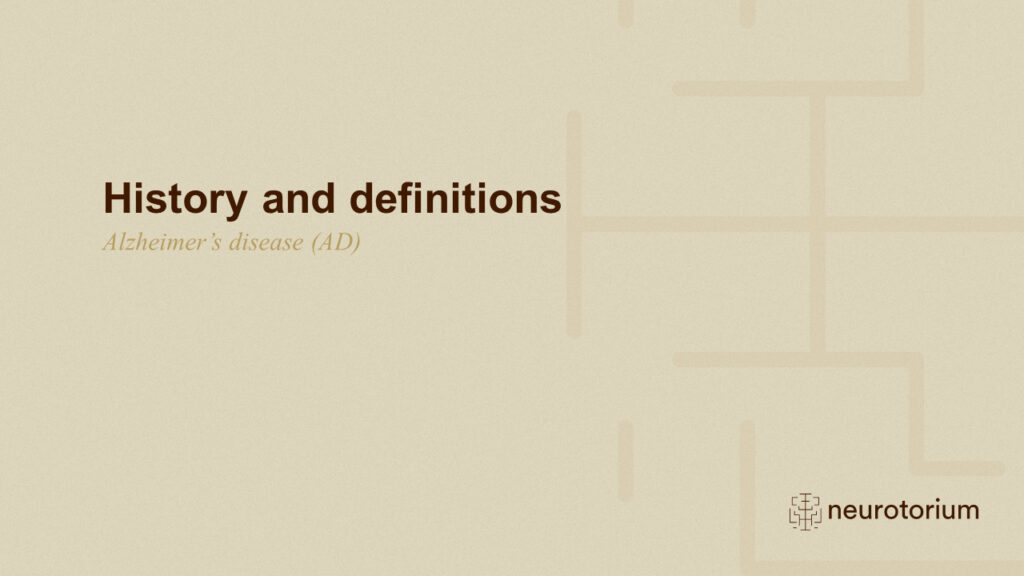
History and definitions
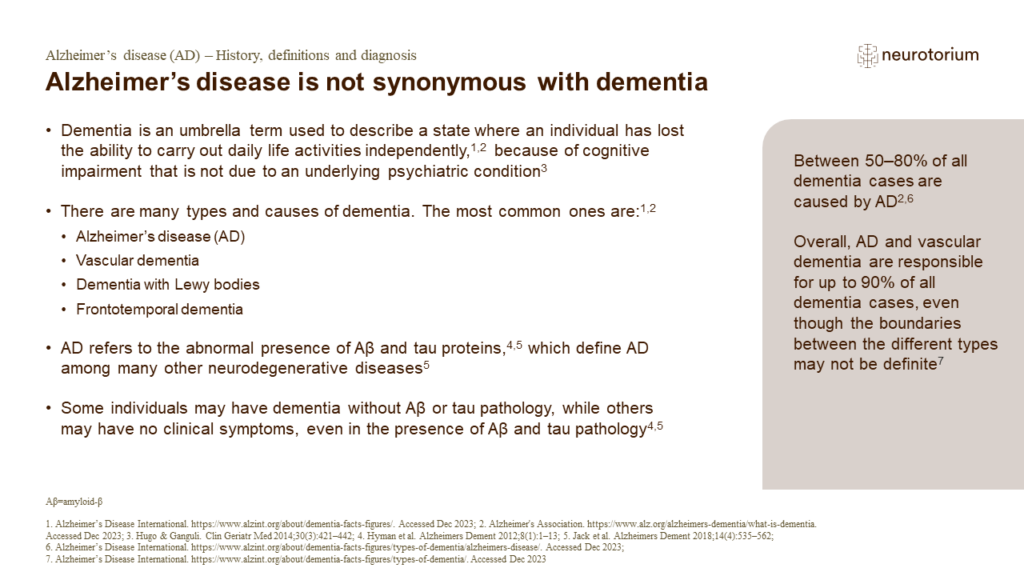
Alzheimer’s disease is not synonymous with dementia
References:
1.Alzheimer’s Disease International website. Dementia facts and figures. Available at: https://www.alzint.org/about/dementia-facts-figures/. Accessed 11 December 2023.
2.Alzheimer’s Association website. What is dementia? Available at: https://www.alz.org/alzhei…
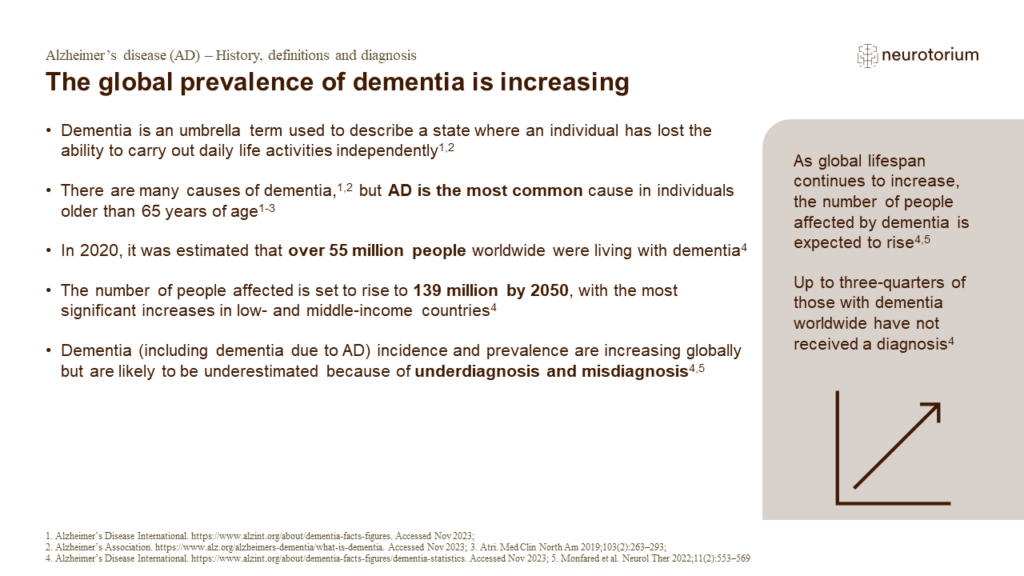
The global prevalence of dementia is increasing
References:
1.Alzheimer’s Disease International. Dementia facts and figures. Available at: https://www.alzint.org/about/dementia-facts-figures/. Accessed 2 November 2023.
2.Alzheimer’s Association. What is dementia? Available at: https://www.alz.org/alzheimers-dementia/wha…
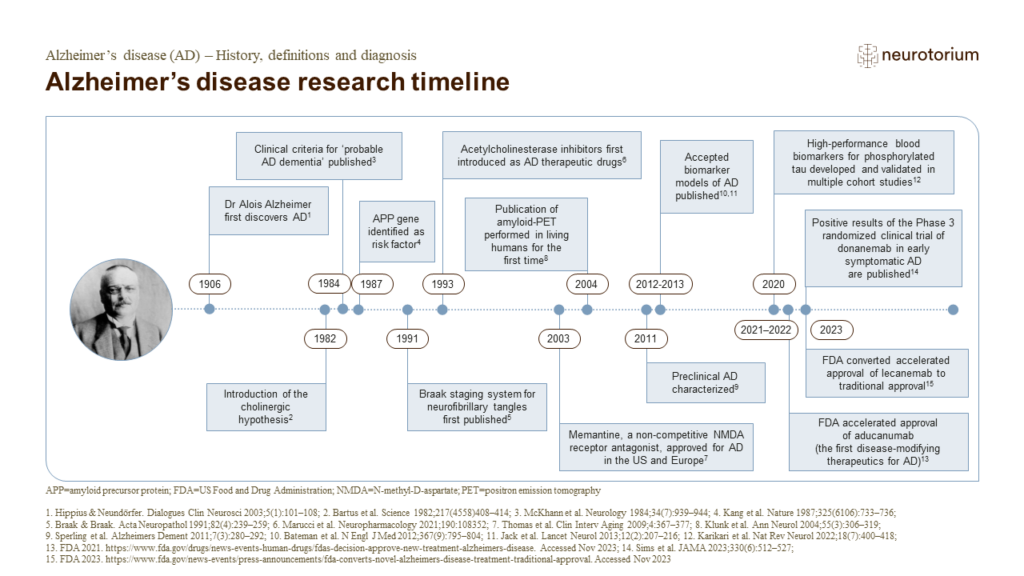
Alzheimer’s disease research timeline
Diagnosis of AD has developed from a pathological approach to a more clinical and exclusionary approach.1,3 NIA-AA Criteria published in 2011, combined with a clinical and biological approach developed by the International Working Group (IWG), allowed for the emergence of…
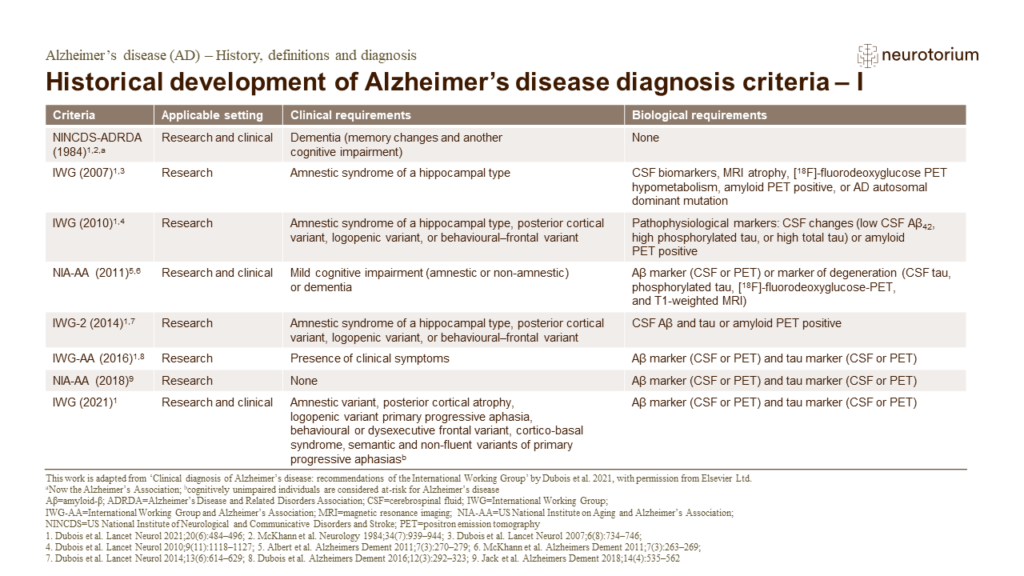
Historical development of Alzheimer’s disease diagnosis criteria – I
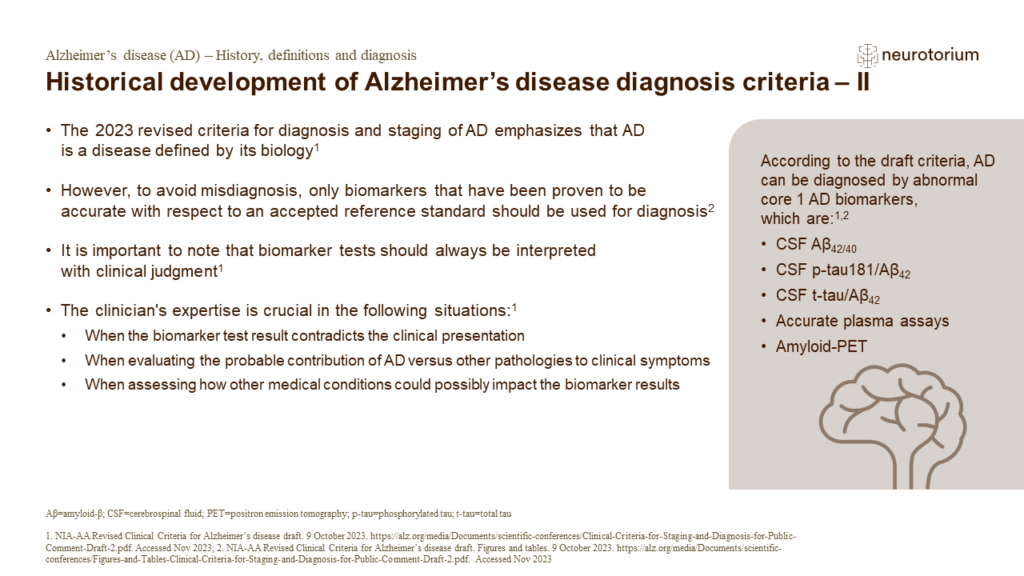
Historical development of Alzheimer’s disease diagnosis criteria – II
References:
1.NIA-AA Revised Clinical Criteria for Alzheimer’s disease draft. 9 October 2023. Available at: https://alz.org/media/Documents/scientific-conferences/Clinical-Criteria-for-Staging-and-Diagnosis-for-Public-Comment-Draft-2.pdf. Accessed 30 November 2023.
2.NIA-A…
Diagnosis, signs and symptoms
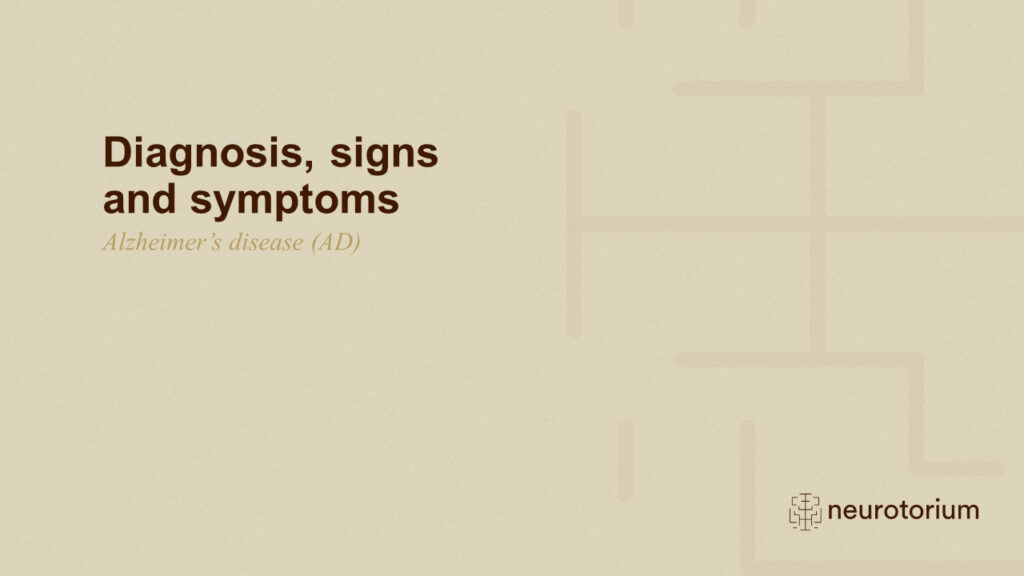
Diagnosis, signs and symptoms
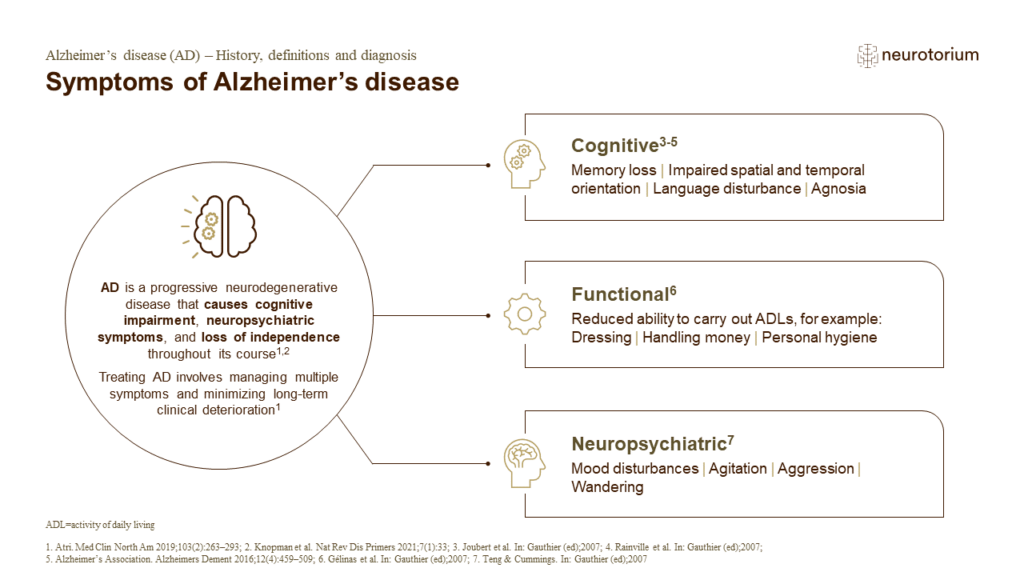
Symptoms of Alzheimer’s disease
2.Knopman DS, Amieva H, Petersen RC, et al. Alzheimer disease. Nat Rev Dis Primers 2021; 7 (1): 33.
3.Joubert S, Joncas S, Barbeau E, et al.…
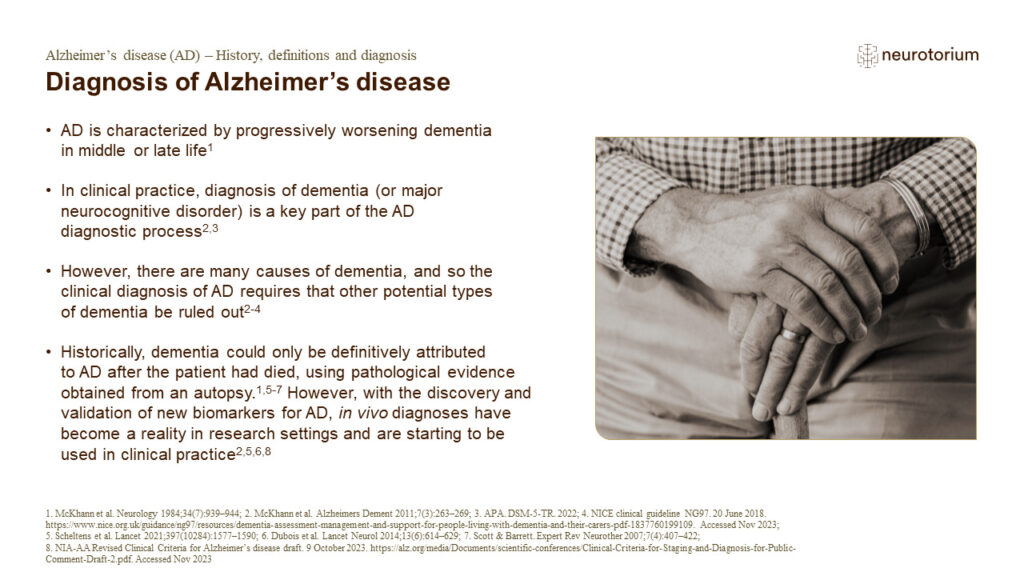
Diagnosis of Alzheimer’s disease
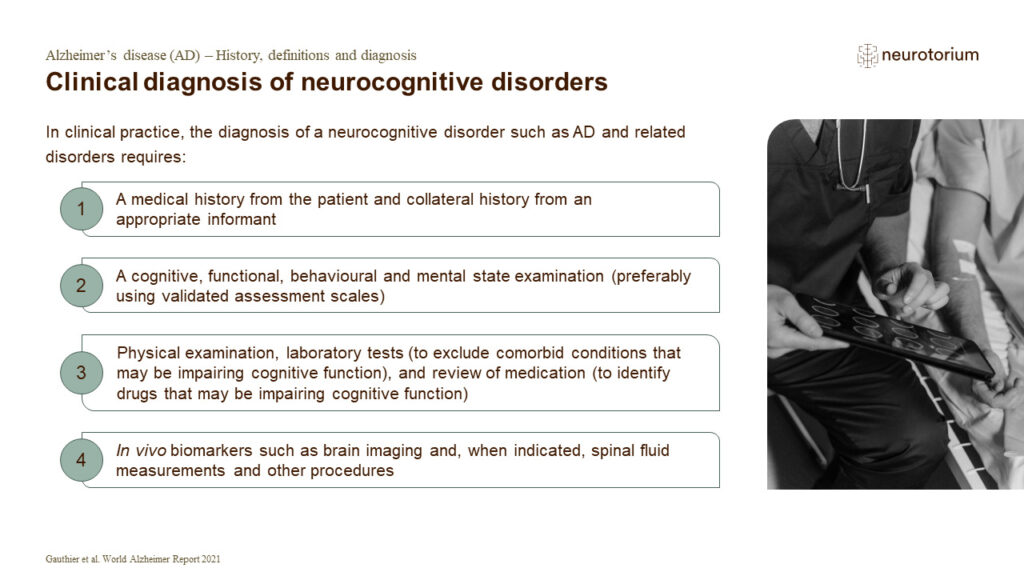
Clinical diagnosis of neurocognitive disorders
Both primary care and secondary care physicians contribute to dementia diagnosis. Primary care is involved in:1
- exploring the patient’s ideas and concerns about their symptoms; excluding any potentially treatable or reversible illnesses
- referring for specialist assessmen…
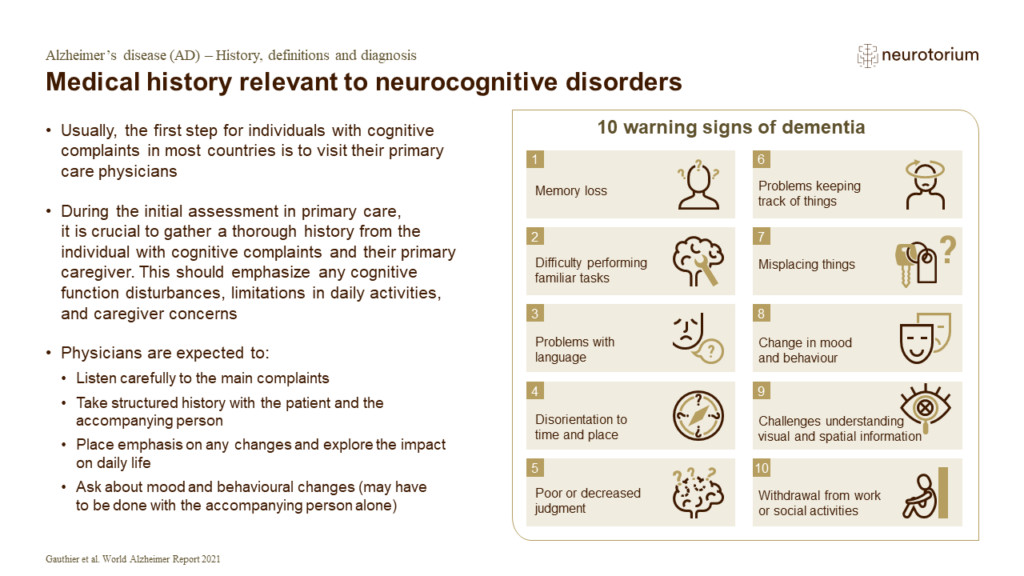
Medical history relevant to neurocognitive disorders
Although the diagnostic journey for an individual with cognitive disturbances may differ around the world, in most countries, the first step involves a visit to the primary care physician.1 In many cases, the primary care physician is supported by a nurse who may record t…
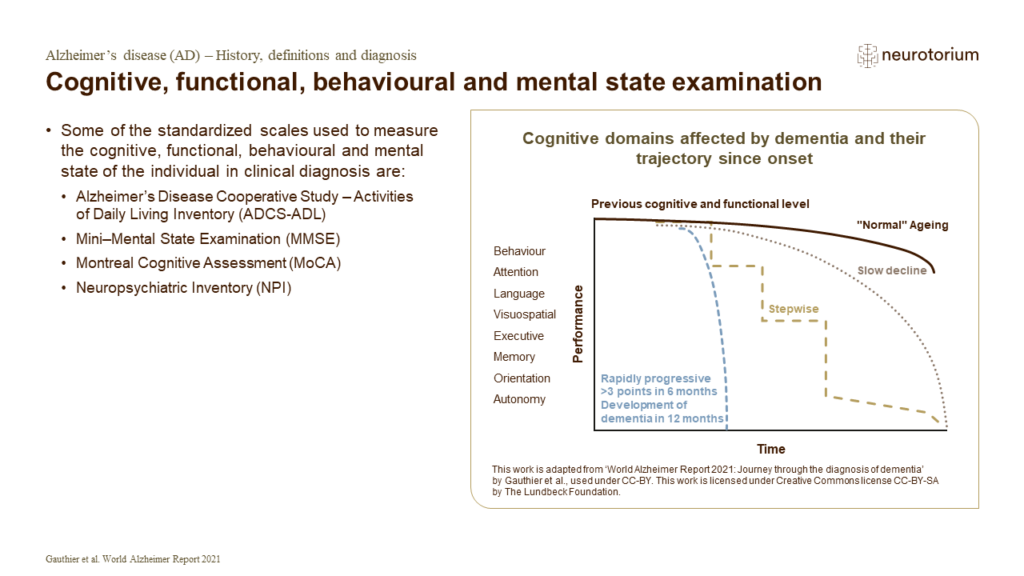
Cognitive, functional, behavioural and mental state examination
Cognitive assessments most commonly used by clinicians are the MMSE and the MoCA.1 The MMSE assesses global cognitive efficiency and is usually used to evaluate the dementia stage and overall progression of cognitive decline.2 However, the ability of the MMSE to detect co…
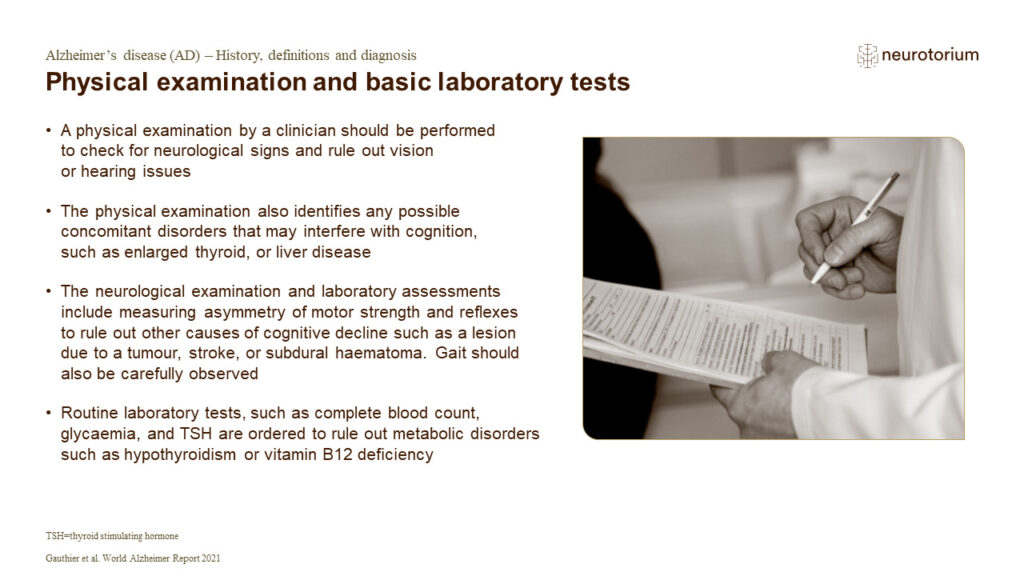
Physical examination and basic laboratory tests
In the initial stages of a dementia diagnosis, a physical examination is conducted.1 This examination is similar to the physical examination conducted when visiting a new doctor.1 Assessments will focus on vital signs such as heart rate, blood pressure, and listening to t…
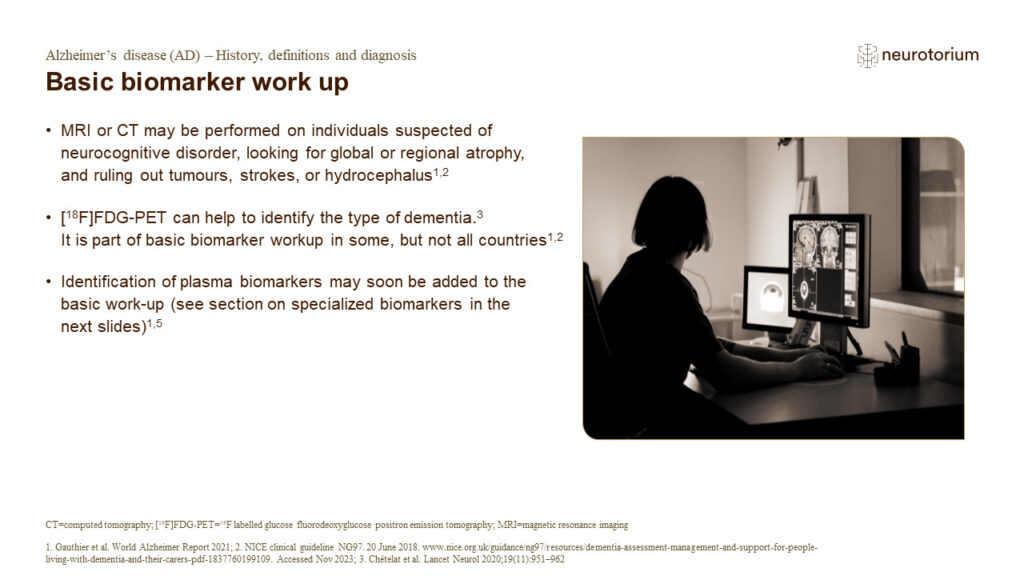
Basic biomarker work up
The biomarker classification system for AD provides three main classes of biomarkers: amyloid-β (Aβ; A), tau (T), and neurodegeneration (N), denoted as A/T/(N).4 While abnormal Aβ and p-tau are considered to be key features of AD in this framework, neurodegeneration may b…

Differential diagnosis of progressive cognitive decline
Subjective cognitive decline is a broad condition that can develop over time due to a variety of potential underlying causes.1 Brain diseases and illnesses that may negatively affect cognition include Alzheimer’s disease, Parkinson’s disease, CVD, inflammatory brain disea…
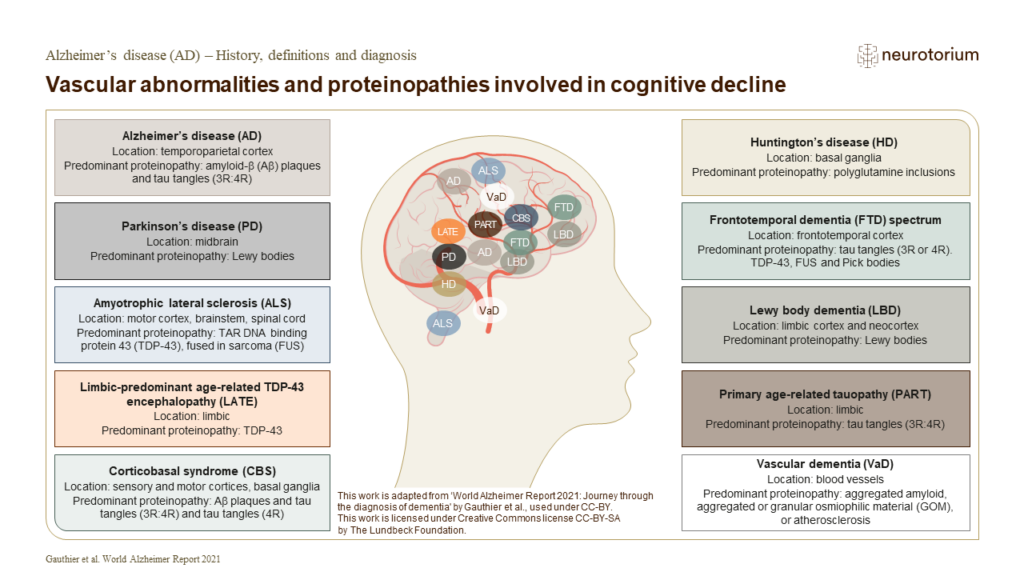
Vascular abnormalities and proteinopathies involved in cognitive decline
Abnormalities in blood flow to the brain, as well as CVD cause dementia.1 It has been well established that dementia symptoms represent neuronal loss resulting from the progressive accumulation of dysfunctional brain proteins – a process called proteinopathy. 1 Particular…
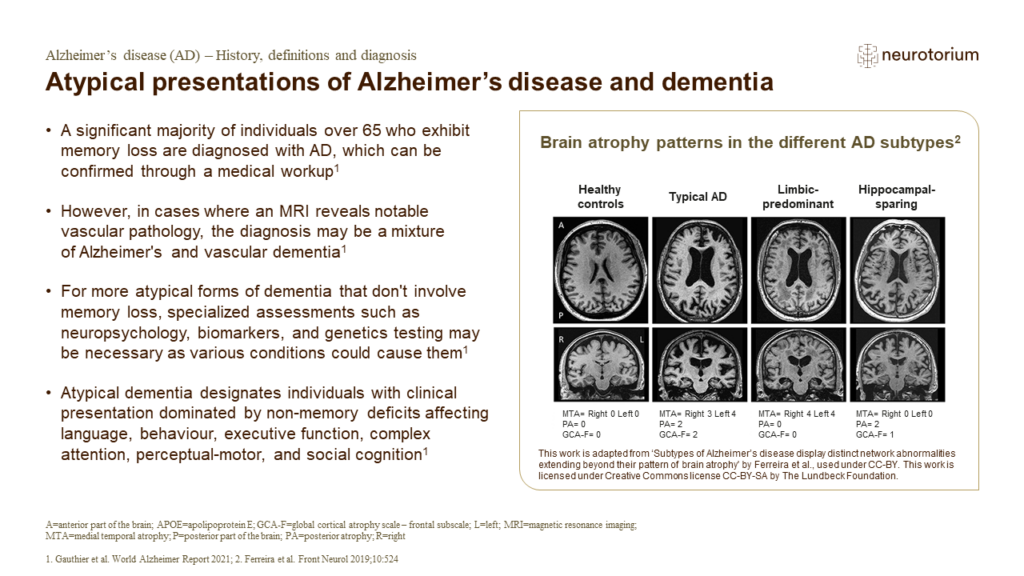
Atypical presentations of Alzheimer’s disease and dementia
The most common clinical presentation of typical AD involves a slow, progressive amnestic disorder which reflects the predominant early distribution of neurofibrillary tangles (NFTs) in medial temporal-lobe structures.3 These changes can be observed as medial temporal atr…
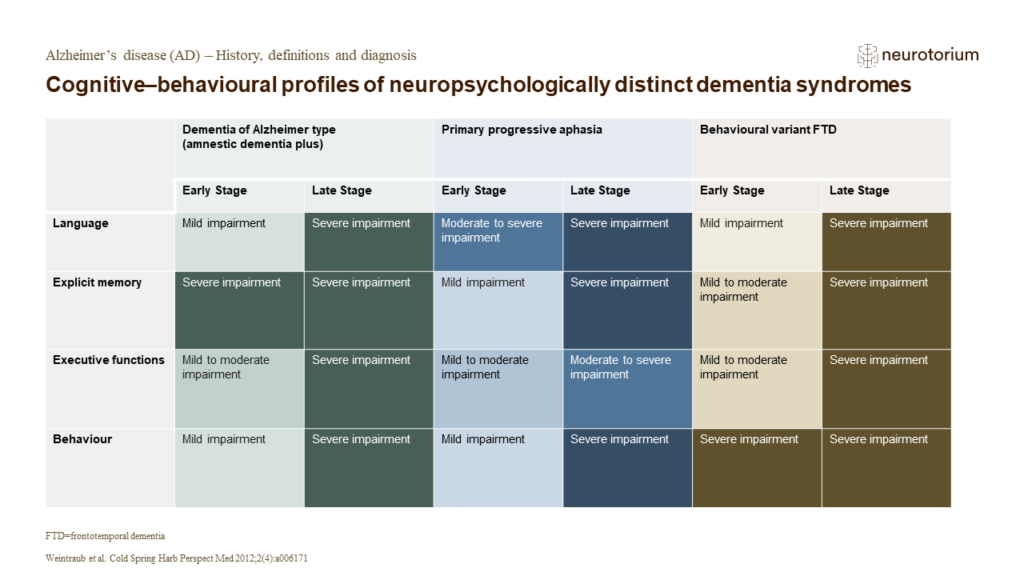
Cognitive–behavioural profiles of neuropsychologically distinct dementia syndromes
In elderly individuals, AD is the leading cause of dementia, however dementia may arise from a range of aetiologically and neuropathologically distinct disorders that contribute to different patterns of cognitive impairment.1 Understanding these different patterns, and th…


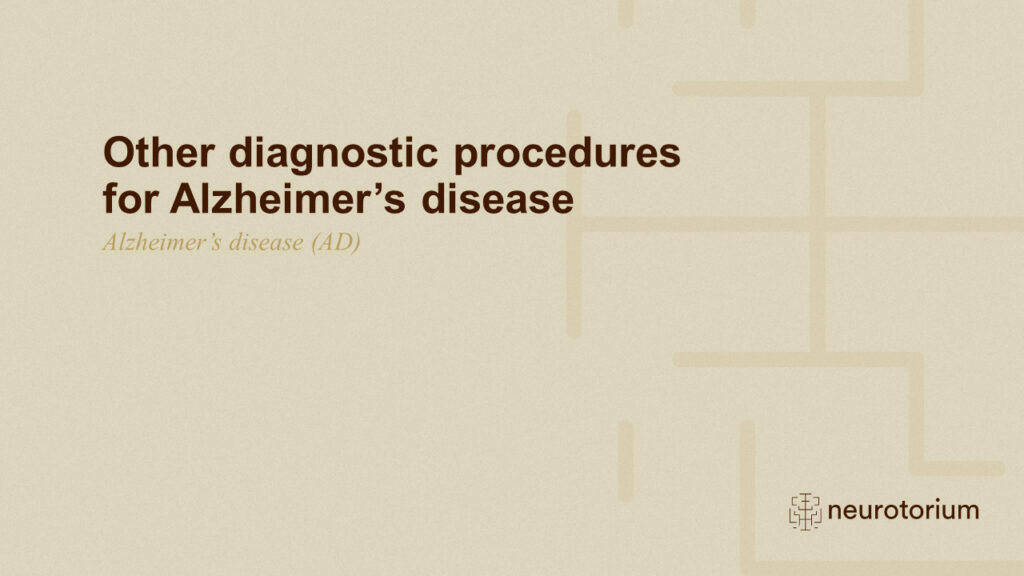
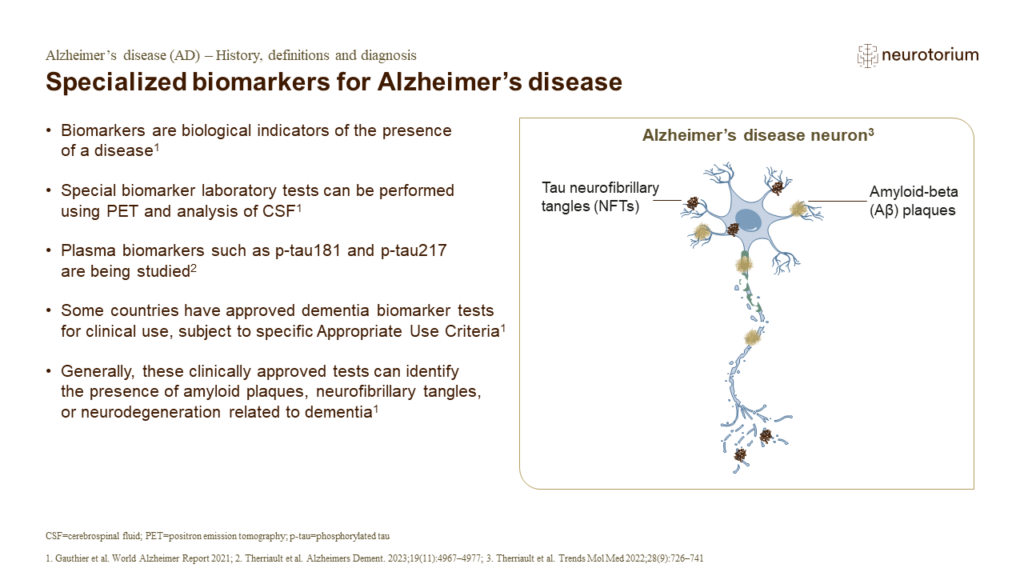
![Specialized biomarkers: Use of [18F]FDG-PET imaging](https://neurotorium.org/wp-content/uploads/ad-history-definitions-and-diagnosis-slide22-1024x576.png)
